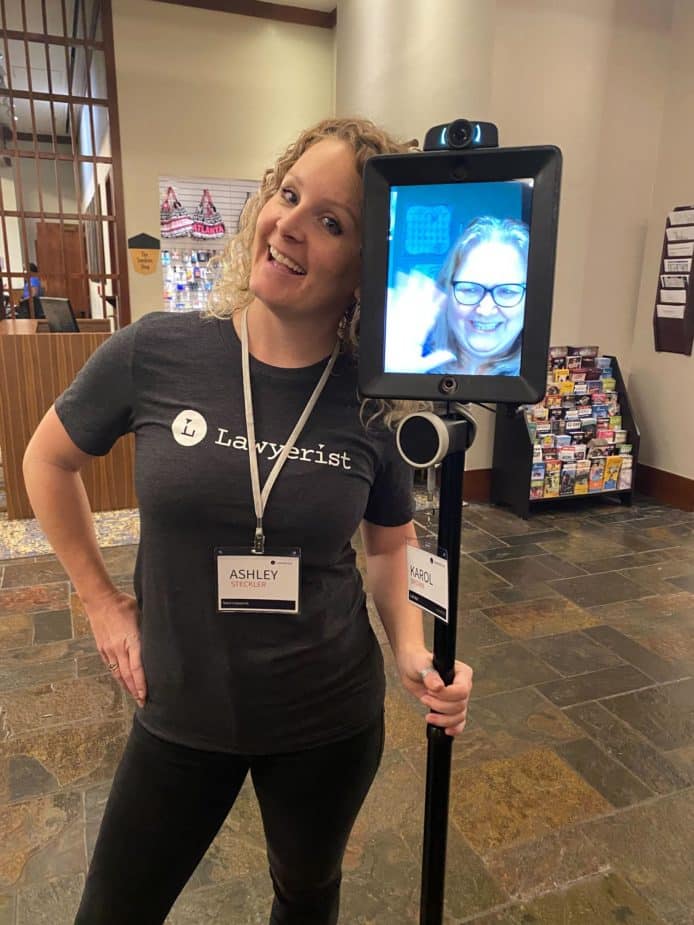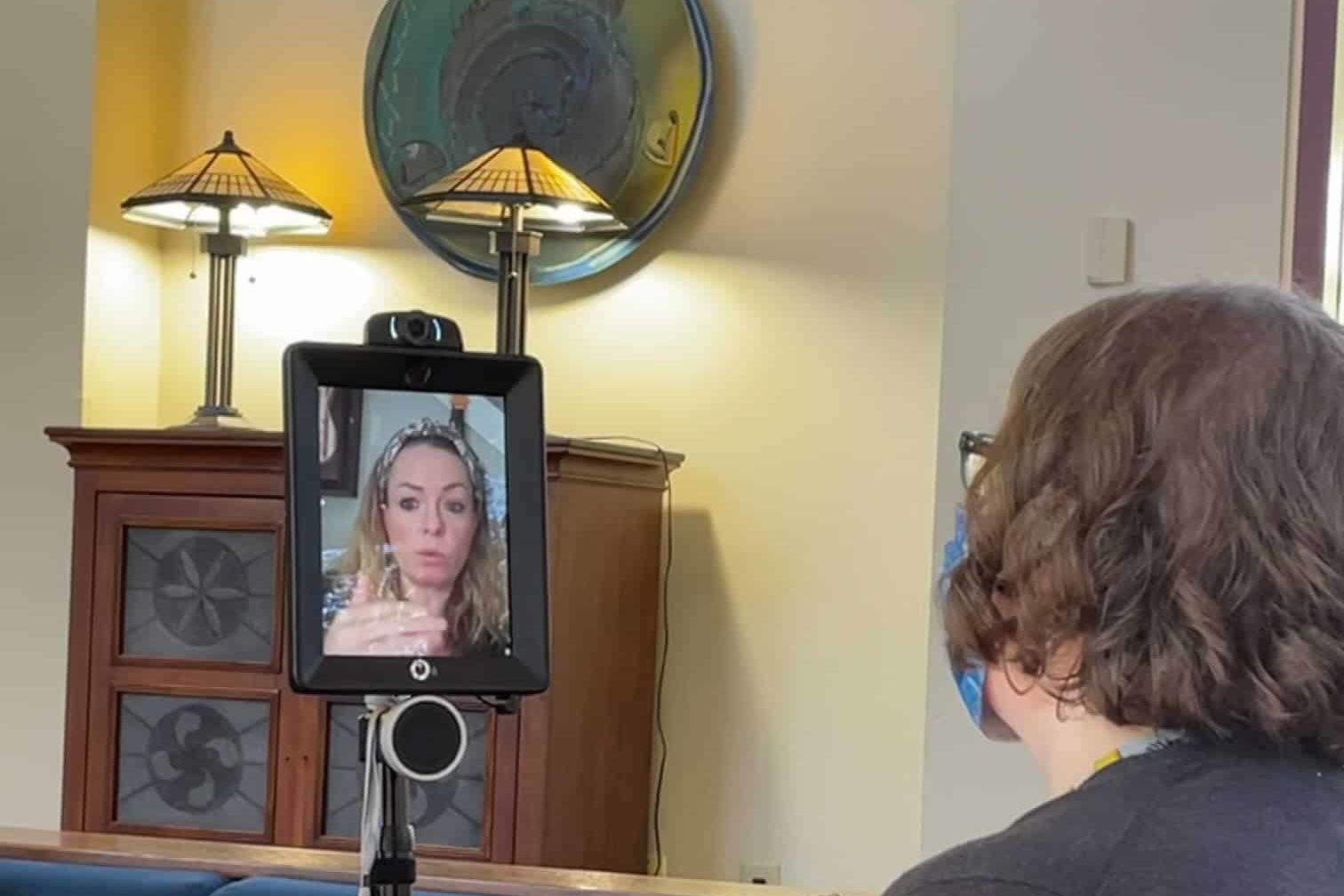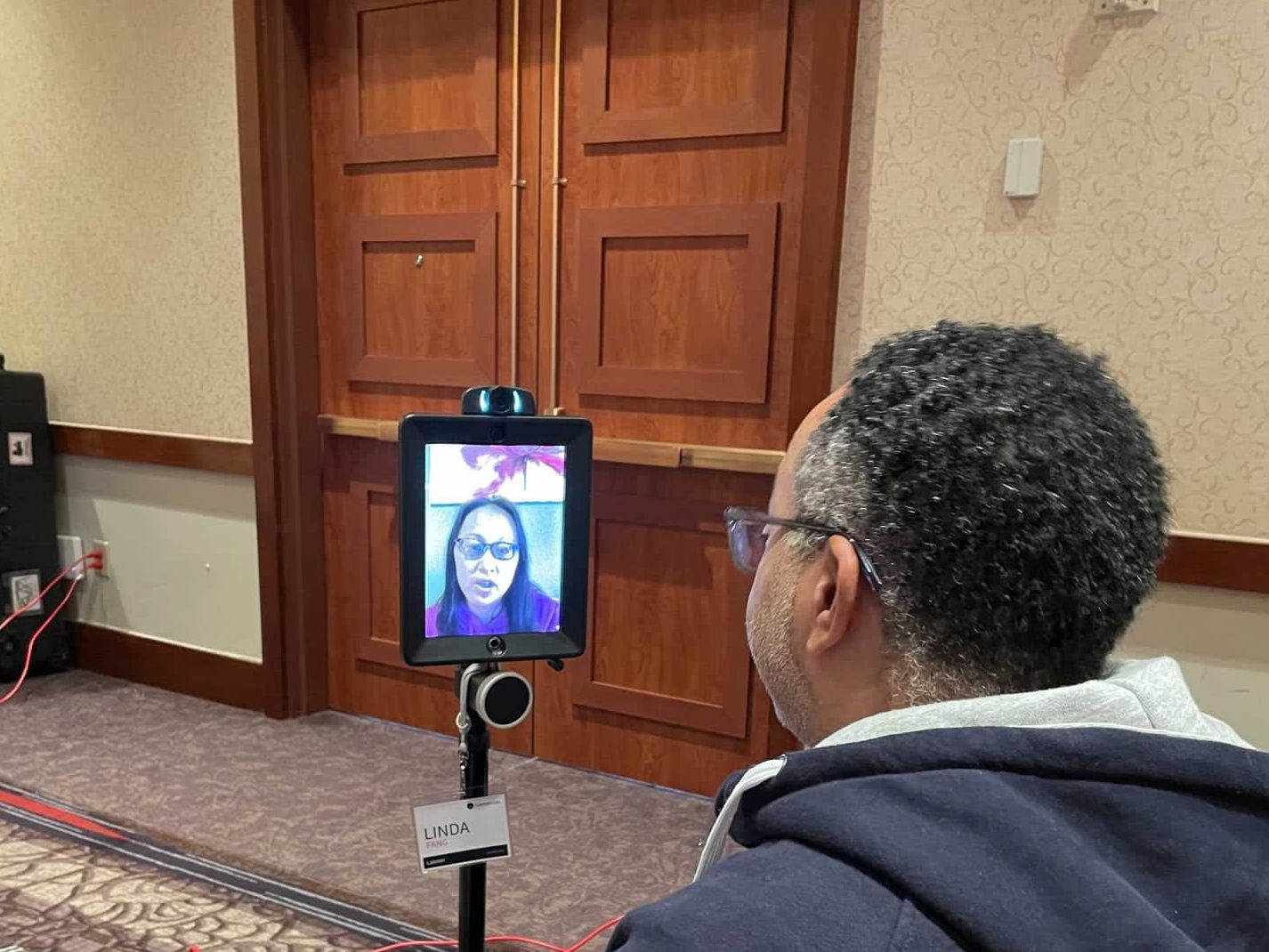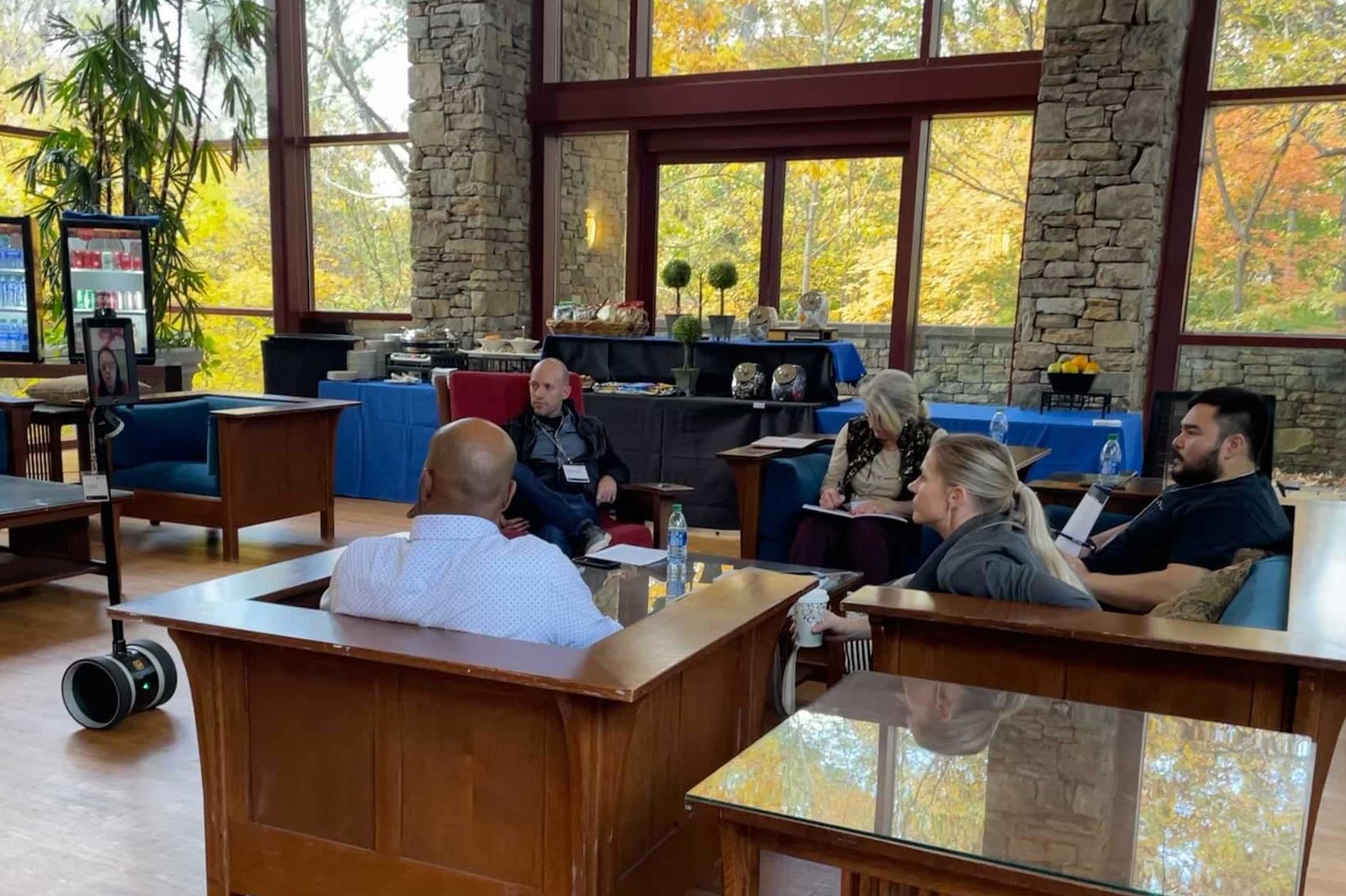Late in 2021, the Lawyerist team hosted one of its bi-annual conferences—well, unconference, or summit/workshop, or whatever. We just call it LabCon. It’s about half conference and half workshop. This time, it was held as a hybrid conference. And, this was our first in-person event since the Spring of 2020.
Since that time (early 2020), we’ve increased our proficiency in virtual spaces—as we’re sure you have as well. As a distributed team, we’ve been using Google Meet for internal communications for years. Additionally, we were handling workshops and meetings with Zoom prior to the pandemic. With the onset of the pandemic, we switched our virtual events to a platform called Slingshow. Here, we could control the environment a bit better, and we could cultivate a better virtual experience for our Labsters. We’ve created quite an experience.
But, there’s a special thing about presence in human connection. Like everyone else, we’ve been looking for ways to connect in-person—safely and responsibly. Being safe and responsible means our events won’t look the same as they always have. Maybe that’s a good thing.
So then, how does an in-person event look? Or, more importantly, how does it feel? It’s likely that a portion of our event will need to be virtual. This comes with its problems and advantages. And our goal, then, is to highlight the advantages while minimizing the problems.
Advantages of Virtual
Yes, we want to see people. To grab a coffee with them or sit next to them and comment on what we’ve learned. We want to talk about our lives, our kids, our cats—something beyond work. We want to high-five, hug, and shake hands.
But, we also know virtual events have had their benefits.
Attendability
For one, they are easier to attend—no flights to deal with, hotels to book, or unfamiliar cities to navigate. We show up from where we are, just as we are. To paraphrase the old trope, “At a virtual conference, no one knows you’re a dog.” And that’s good, ’cause I’m in the middle of nowhere, and I dress like a lumberjack. That’s not usually considered professional, y’all.
Consumability
Secondly, we can “attend” more of the conference (or just more conferences). In-person events have a temporal disadvantage. No matter how hard I try, I cannot be in two places at the same time. And, it’s generally frowned upon to take a meeting, phone call, or watch another conference while sitting in the ballroom.
On the other hand, I often have two conferences up at the same time, and I’m absolutely monitoring our internal #Slack messages while “attending.” Is this effective? No. Is it possible? Absolutely.
Cheaper
Thirdly, and definitely not lastly, it’s cheaper all around (usually). Virtual conference producers typically have less infrastructure expenses. And attendees don’t have to pay for hotels, meals out, or flights to and from the conference city. This reduced expense often leads to greater accessibility.
Other
I’m sure you can think of a lot of other advantages to virtual conferences. Some will be universal, and some will be particular to your circumstances. But, generally, a virtual conference is a facsimile of an in-person event. Even though some companies have put on some impressive virtual conferences, I still would have rather been at the real thing.
Virtual Problems
Er . . . real problems in a Virtual Conference.
First and foremost, there’s an energy to in-person events; a comradery. They’re a place to meet and greet, see and be seen, make new friends and check in with old ones. Conversations happen by the water cooler, at the bar, or just while waiting in line to get your swag bag.
How do we recreate this?
Secondly, and arguably more importantly, how do partners gain real value from the event? I love walking the expo floor—all expo floors. I find what’s out there, what’s new, and what’s trending. Many times, I gain a contact or even a friend, which is the real point. This is top-of-the-funnel stuff. Just build relationships.
Business is about relationships. Unfortunately, I really have to work to create relationships in a virtual space, and so do the partners. When is that worth paying for? Like it or not, we have to balance interests at conferences. Attendees need value, but so do sponsors. Without our partners, these conferences would be held in the basement of the YMCA, and we’d get cold cuts and cold coffee. I mean, I’m cool with that. But remember, I’m in the middle of nowhere, dressed like a lumberjack.
Hybrid Conferences
None of the foregoing is new to you, I’m sure. We’ve all seen the problems, and we’ve all noticed some advantages. And, frankly, even if the world becomes a place of unbridled travel again, we might as well learn from our virtual events. Hybrid is the way forward. But what does that look like?
I don’t know.
Seriously. We’re in a place of exploration and experimentation. It’s going to look vastly different in a year. Or even six months. But, for Lawyerist, it looks like robots and active participation from partners.
Robots: a virtual, physical experience
During our Fall LabCon event in November 2021, we offered the option to appear virtually. Actually, “virtual” is a misnomer. We provided the opportunity to appear physically, but with a robot proxy. This is what a hybrid conference looked like for us.

I had one-on-one conversations with people appearing through an iPad, who were independently moving around via robot. I forgot they weren’t there.
And so did Max and Fiona.

And Aaron and Linda.

I mean, they couldn’t get in on the snacks. But, they were face-to-face, connecting with people, and forging new relationships. They were just doing this from their computer, for whatever reason they wanted.
We even had small break-out groups with active robot participants.

Partners: participants, experts, teammates
So, at a hybrid conference, how do we do an expo with virtual participants? Can the robots really experience the expo floor? Should they?
No. And no.
This is not the answer for everyone. We didn’t have an expo floor. It didn’t work for our structure. And, frankly, we’ve never done one at LabCon. Instead, we ask our partners to bring their most valuable assets—their expertise. And to bring those to the discussions, the presentations, and even the lunch table.
If our partners aren’t valuable to our community, they shouldn’t be there. Since they are valuable, the community will include them and learn from them. We shouldn’t limit that in any way.
The Way Forward
This all worked wonderfully—for us.
Obviously, the ABA TECHSOW or Clio’s Cloud Conference can’t work the way our hybrid conference did. They too have to experiment, analyze, and iterate. Some things will land and others will not. Whether you’re a large national conference like those two, or a small, regional mastermind event, we’re all looking to maximize our accessibility through virtual experiences. We can all still focus on fostering human connection and providing tangible value to participants and partners alike.
Share Article
Last updated September 16th, 2022